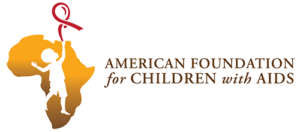When you think of bees and goats, what comes to mind? Honey, milk, cheese, and maybe some cute goats jumping on things? While these things are all true, there’s so much more to these two creatures than sweet treats and charming antics. In recent years, goats and bees have been proven to be mighty assets in helping to transform people’s lives in areas with limited resources. In this blog, we will examine how bee and goat programs create meaningful change by improving health and nutrition and generating income for communities.
Improved Health and Nutrition
One of the most significant benefits of goat and bee programs is their ability to help improve community health and nutrition. Through breeding and raising goats, communities can access protein and other animal products, which can profoundly impact their well-being. Goats are also known for their ability to eat almost any vegetation, making them a valuable food source in regions lacking adequate grazing lands. Bees, conversely, provide communities with honey and other bee-made products, which have high nutritional value and are known for their healing properties. Honey is antibacterial and effective in treating wounds and promoting burn healing. With better access to these products, communities are healthier and more resilient.
Income Generation
In many communities worldwide, income is hard to come by, and families struggle to make ends meet. This is where bee and goat programs come in. Both programs provide a method of income generation that is affordable, accessible, and sustainable. Bees produce honey, wax, pollen, and propolis, which can be sold or traded for other goods. Moreover, goats are breeding animals, and new offspring can be sold or traded for other livestock or goods. By providing communities with the resources to build and maintain bee and goat habitats, people can economically empower themselves and increase their livelihoods.
Environmental Impact
Bees and goats also have a beneficial impact on the environment. Goats can help clear undeveloped lands, making them suitable for farming or construction. They are known as natural “lawnmowers” and can help communities that do not have access to machinery. As for bees, they are essential pollinators responsible for pollinating up to 70% of the world’s crops. Introducing bee colonies into areas without a sufficient bee population can revitalize the environment, and crop production will increase. In this way, bee and goat programs benefit not only individuals and communities but the planet as a whole.
Conclusion:
Bee and goat programs are powerful tools for sustainable and long-term community transformation. These programs can transform lives meaningfully by providing access to health benefits, income generation, and environmental revitalization. We must continue to support these initiatives and work towards a more resilient and sustainable future. Through donations, advocacy, or volunteering, we should all do our part to help spread the word about the power of bees and goats.

